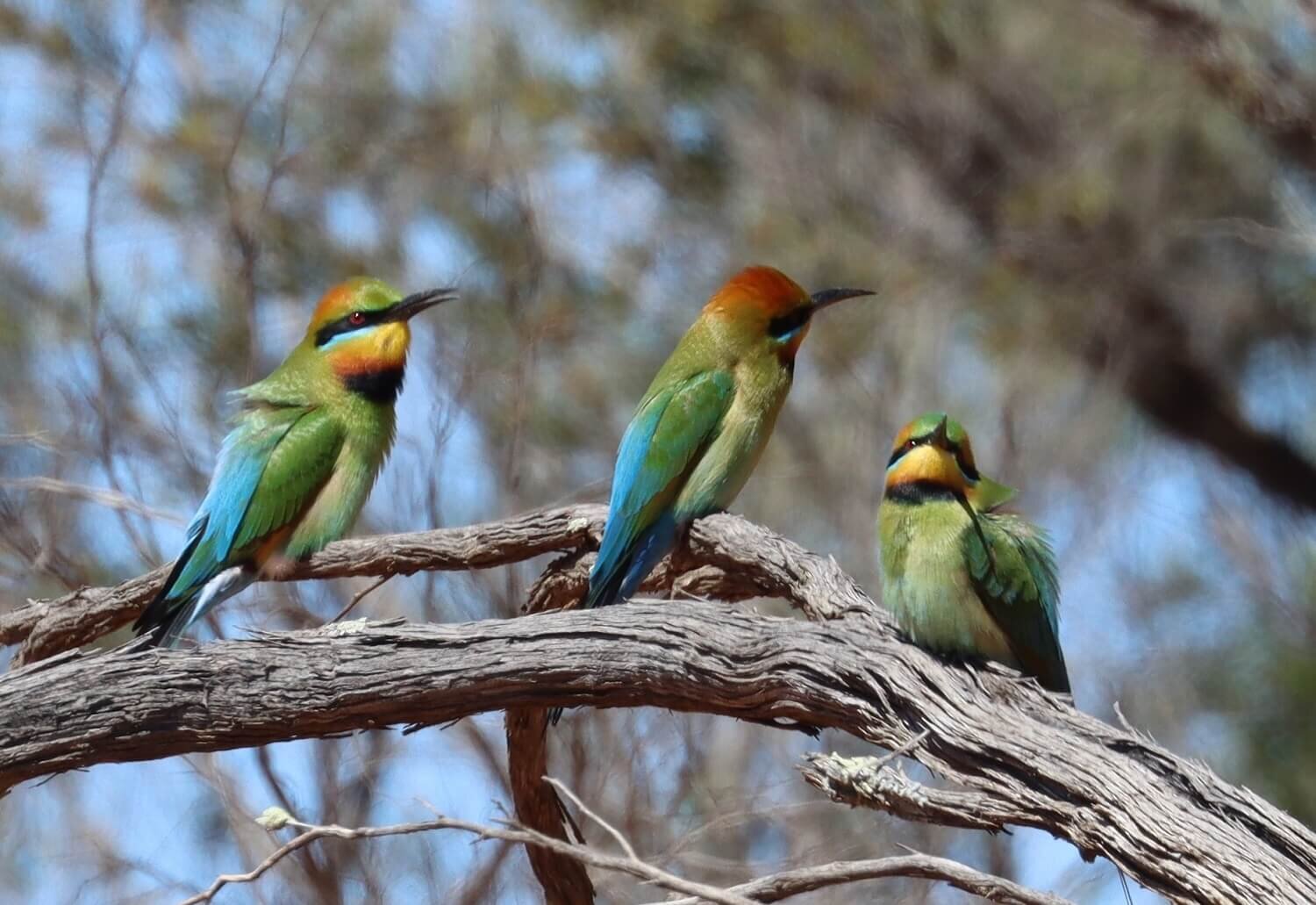Rainbow Bee-eaters and phenology
Rainbow Bee-eaters fly swiftly, catching bees and wasps on the wing. They return to their exposed perches to bash the insects on a branch, removing the sting before eating it. I enjoy the bright plumage of this wonderful bird.
Rainbow Bee-eaters are widespread across Australia, but only visit the southern states in Spring and Summer. They over-Winter in the north, some as far north as Indonesia and New Guinea. They arrive in the southern States in Spring and stay for the Summer. We see them in groups of up to six, but they can form groups of up to 100 birds! Imagine that!
Their nests are excavated tunnels in sandy soil with a grass-lined chamber. Tunnels are about 90 cm long! Breeding in the southern states is from November to January and apparently, they mate for life. We have a site on a neighbouring property with exposed sandy cliffs that the Bee-eaters use.
Rainbow Bee-eaters are not considered threatened but reporting rates have declined over the last ten years. As a dramatic illustration of this, my friend “Cinclosoma” (not his real name!) recalls:
I know how exciting it is to see a hundred or so, and thousands used to arrive in October in the 1950s and 60s. The air would be filled with their incessant calls as they swooped and circled. This aerial display would last a week or more until pair bonds were made or renewed, and they settled down to excavate their tunnels. Tunnels were underfoot all about our home, along the roadside and railway embankments. Many colonial nesting sites were used year upon year, I think by the very same pairs, returning to the same tunnels, which they set to renovating.”
And now to phenology - the study of periodic events in biological life cycles and how these are influenced by seasonal and interannual variations in climate or habitat (Wikipedia). Basically, the timing of when things happen in nature …
Here are the arrival dates for the Bee-eaters arriving on Raakajlim
2020 - 5th October
2021 - 11th October (despite the 7-day snap Covid lockdown in the Mildura area!)
2022 - 3rd October
2023 - 25th September
The amazing Geoff Park has also collected dates of their arrival in Newstead (Central Victoria) in his blog. They appear to be about a week or two later to arrive in Central Vic.
More information
Rainbow Bee-eaters - Australian Museum site
Birdlife Australia - Rainbow Bee-eaters
I’ve become really interested in observing the seasonal calendar of Raakajlim, in the northern Mallee. When does stuff happen and how does it change year to year? We’ve been observing this forever, but we’re only two years in recording it!
I’m standing on the shoulders of giants here though. Climate Watch trails invite citizen scientists on the phenology journey, right across Australia. And the wonderful Tanya Loos created a book of the six seasons of the Wombat State Forest: Daylesford Nature Diary. I can’t improve on her comments on how special it is when you begin to notice nature, except to add … self-transcendence.





